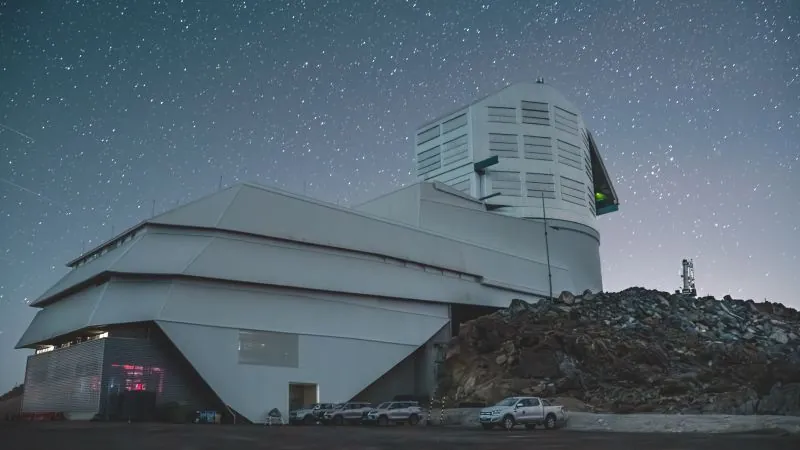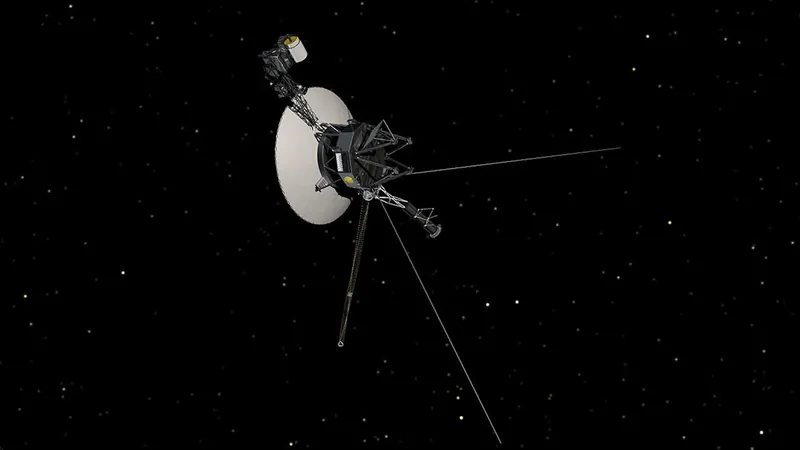
Vera C. Rubin Observatory: The Digital Eye that Will Transform Astronomy Forever!
2024-10-23
Author: Jia
Vera C. Rubin Observatory: The Digital Eye that Will Transform Astronomy Forever!
Perched atop a mountain in northern Chile, the Vera C. Rubin Observatory is readying for an unprecedented journey into the cosmos. This groundbreaking facility will house the world’s largest digital camera, an astonishing piece of technology designed to capture the night sky in extraordinary detail, potentially unlocking the universe's most profound mysteries.
Built on the summit of Cerro Pachón, a towering mountain reaching 2,682 meters (8,800 feet), this observatory is a collaborative achievement that has been under construction since 2015. The colossal camera boasts an impressive resolution of 3,200 megapixels—equivalent to around 300 cell phones. Each photograph taken will document an area of sky as expansive as 40 full moons. This innovative approach is set to revolutionize how astronomers perceive celestial phenomena.
Unveiling the Unseen!
Every three nights, the Rubin Observatory will scan the entire visible night sky, generating thousands of images that will allow researchers to monitor anything that shifts or flickers in brightness. With expectations to unveil as many as 17 billion previously unobserved stars and 20 billion galaxies, the exploration of the cosmos is about to enter a new era.
Clare Higgs, the observatory’s astronomy outreach specialist, underscores the boundless potential for discovery. “Rubin will illuminate aspects of the sky we've never thought to investigate, allowing us to pursue questions that remain unanswered.” The telescope will operate in a decade-long survey known as the Legacy Survey of Space and Time (LSST), capturing 1,000 nightly images and ultimately leading to what Higgs describes as a rich tapestry of new scientific understanding.
A Cosmic Quest Like No Other!
The observatory’s mission will not only explore new territories in the sky but also push the frontiers of astronomical science. High-profile funding from private donations—particularly from tech moguls like Bill Gates and Charles Simonyi—along with support from the U.S. Department of Energy and the National Science Foundation, have made this ambitious venture a reality.
It’s no accident that the Vera Rubin Observatory is located in the Chilean Andes. This region, renowned for its high altitude, minimal light pollution, and exceptionally dry atmosphere, provides optimal conditions for astronomical observations. Higgs elaborates on the advantages of this site, stating, “The quality of the night sky in Chile is exceptional, contributing significantly to our ability to capture clear and detailed images.”
As preparations are carried out for the official switch-on in 2025, the anticipation is palpable. The final assembly of the telescope's intricate components is already underway, and the team aims to test the systems in the spring of next year ahead of the observatory's inaugural observations planned for late 2025.
Brace Yourself for an Avalanche of Data!
The scale of data produced will be staggering. The camera can take an image every 30 seconds, generating around 20 terabytes of data daily—this is equivalent to an average person streaming Netflix for three full years! Over its decade of operation, the LSST will produce an astounding 60 million gigabytes of raw data. With a staggering 10 million alerts expected nightly for changes in the sky—such as moving asteroids or disappearing stars—machine learning technology will be crucial for processing and analyzing this wealth of information.
The Rubin Observatory's data will eventually be shared with the global scientific community, setting off a race among astronomers to examine fresh opportunities for groundbreaking discoveries. As Higgs explains, the hopes lie in four main research areas: cataloging solar system objects, mapping the galaxy, investigating transient astronomical events, and decoding the enigma of dark matter.
A New Dawn for Cosmic Research!
The astronomical community is buzzing with excitement. David Kaiser, a physics professor from MIT, highlights the potential for the Rubin Observatory to provide unprecedented insights into dark matter and dark energy, the universe's enigmatic forces. “With the ability to map dark matter distribution using gravitational lensing, we may finally understand its behavior throughout cosmic history,” Kaiser notes.
Moreover, the observational capacity of the Rubin Observatory may yield long-sought evidence of the elusive Planet Nine, an enigmatic theoretical planet hypothesized to exist in the outskirts of our solar system. Konstantin Batygin from Caltech expresses enthusiasm for the project’s potential impact, stating, “The detailed mapping of the outer solar system may validate or challenge the existence of Planet Nine in ways we cannot currently imagine.”
With funding support from various esteemed institutions and a unique location that empowers it, the Vera Rubin Observatory stands on the brink of unveiling an extraordinary wealth of astronomical knowledge. As we advance toward its operational phase, the anticipation surrounding its capabilities highlights a turning point in our cosmic quest for love, discovery, and enlightenment—where every photo taken could change the narrative of our universe.
Prepare for a cosmic journey that promises to reshape the very fabric of our understanding. The Vera C. Rubin Observatory is more than just a telescope; it is a game-changer for astronomy! Buckle up, stargazers—your universe awaits!

 Brasil (PT)
Brasil (PT)
 Canada (EN)
Canada (EN)
 Chile (ES)
Chile (ES)
 España (ES)
España (ES)
 France (FR)
France (FR)
 Hong Kong (EN)
Hong Kong (EN)
 Italia (IT)
Italia (IT)
 日本 (JA)
日本 (JA)
 Magyarország (HU)
Magyarország (HU)
 Norge (NO)
Norge (NO)
 Polska (PL)
Polska (PL)
 Schweiz (DE)
Schweiz (DE)
 Singapore (EN)
Singapore (EN)
 Sverige (SV)
Sverige (SV)
 Suomi (FI)
Suomi (FI)
 Türkiye (TR)
Türkiye (TR)